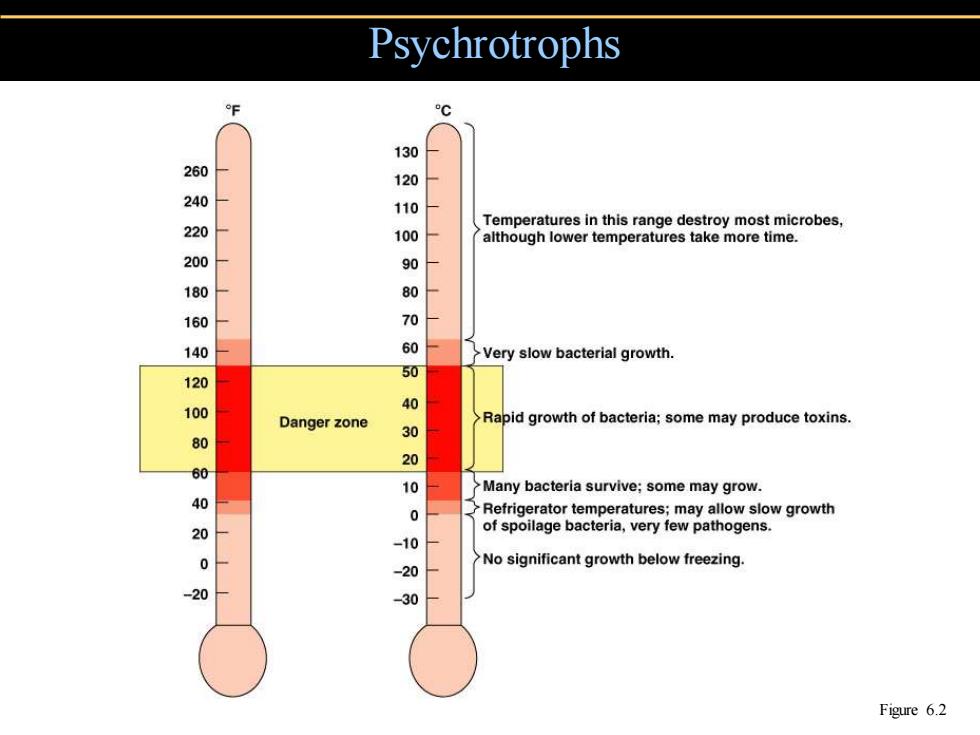
Psychrotrophs 130 260 120 240 1 10 Temperatures in this range destroy most microbes, although lower temperatures take more time. 2 00 160 70 140 60 Very slow bacterial growth 120 50 40 Danger zone Rapid growth of bacteria;some may produce toxins. 80 20 10 Many bacteria survive;some may grow. 40 Refrigerator temperatures;may allow slow growth of spoilage bacteria,very few pathogens. -10 No significant growth below freezing. -20 -30 Figure 6.2
Psychrotrophs Figure 6.2
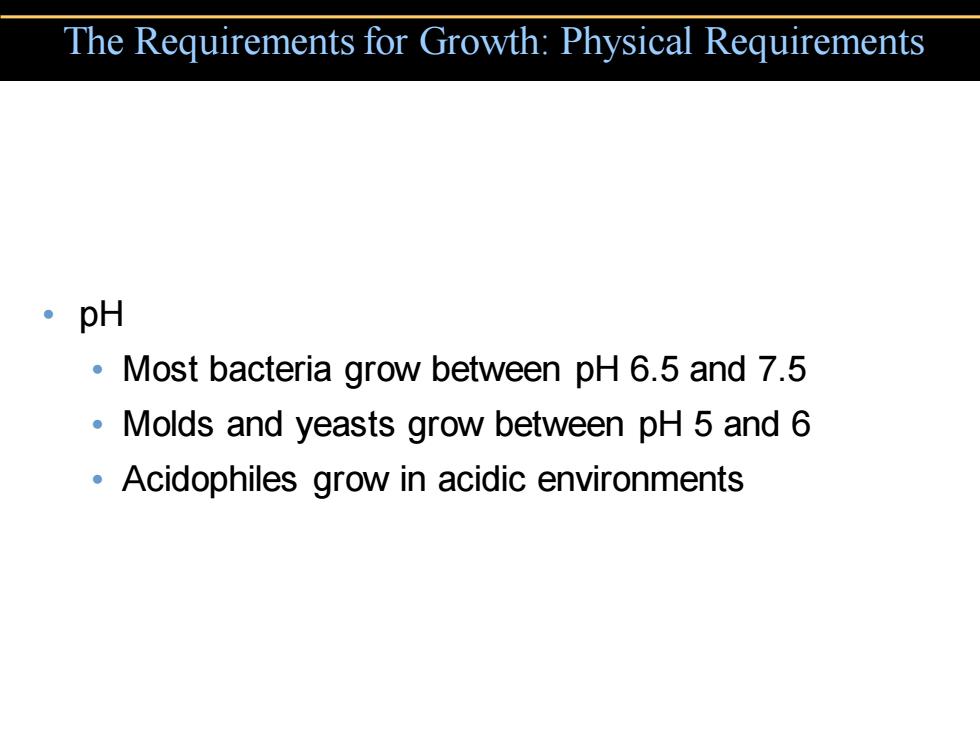
The Requirements for Growth:Physical Requirements 。pH Most bacteria grow between pH 6.5 and 7.5 Molds and yeasts grow between pH 5 and 6 Acidophiles grow in acidic environments
• pH • Most bacteria grow between pH 6.5 and 7.5 • Molds and yeasts grow between pH 5 and 6 • Acidophiles grow in acidic environments The Requirements for Growth: Physical Requirements
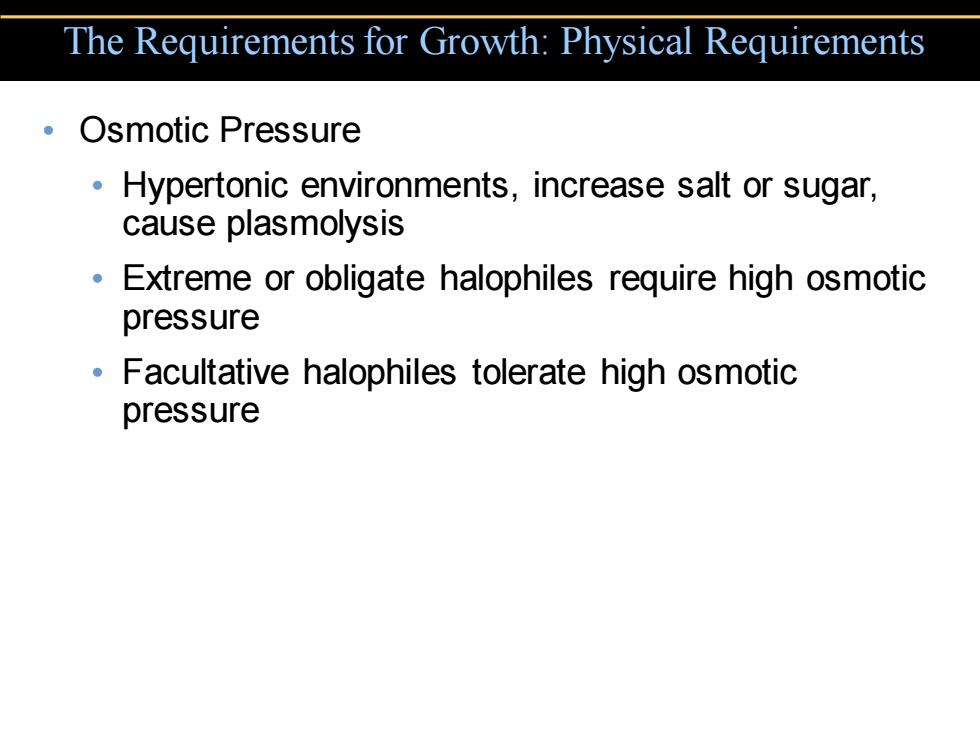
The Requirements for Growth:Physical Requirements Osmotic Pressure Hypertonic environments,increase salt or sugar, cause plasmolysis Extreme or obligate halophiles require high osmotic pressure Facultative halophiles tolerate high osmotic pressure
The Requirements for Growth: Physical Requirements • Osmotic Pressure • Hypertonic environments, increase salt or sugar, cause plasmolysis • Extreme or obligate halophiles require high osmotic pressure • Facultative halophiles tolerate high osmotic pressure
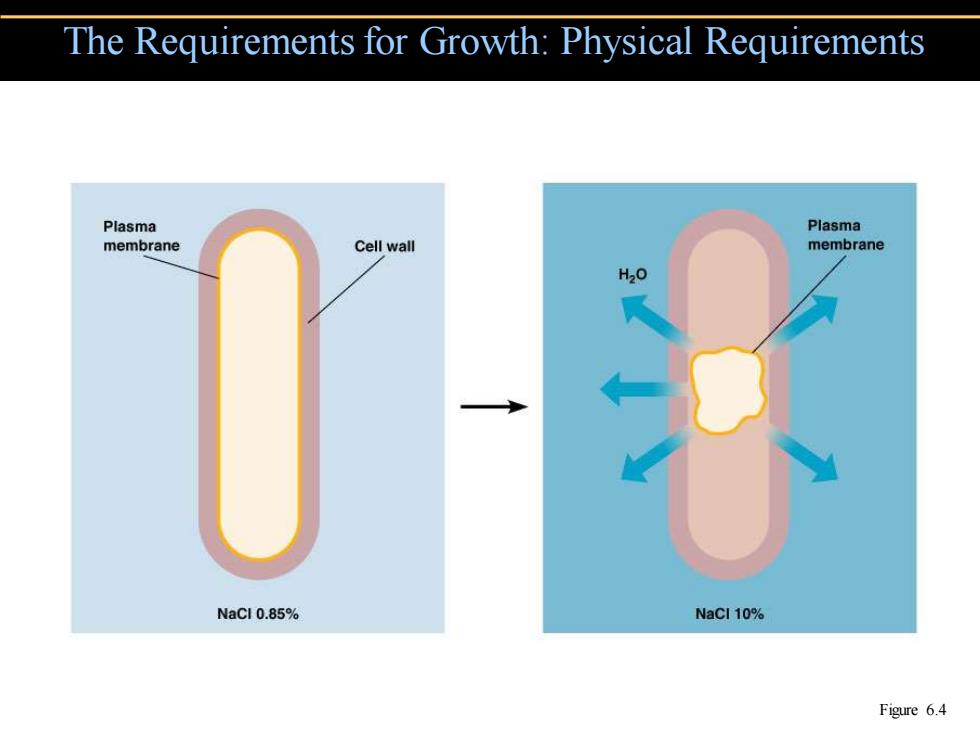
The Requirements for Growth:Physical Requirements Plasma Plasma membrane Cell wall membrane H2O NaCl 0.85% NaCI 10% Figure 6.4
The Requirements for Growth: Physical Requirements Figure 6.4
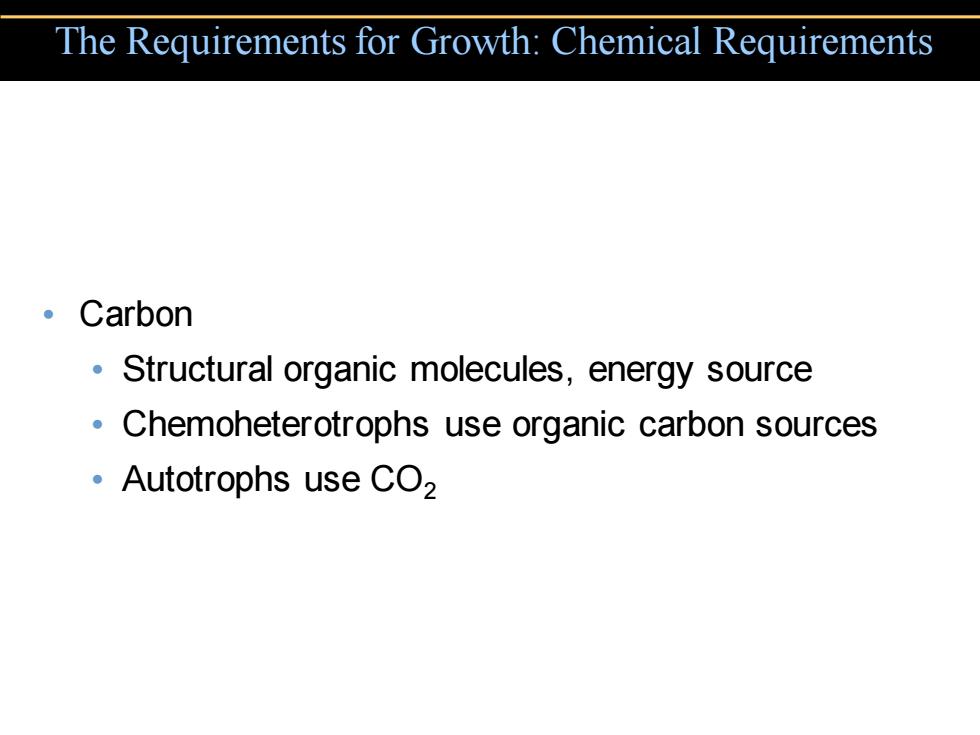
The Requirements for Growth:Chemical Requirements 。Carbon Structural organic molecules,energy source Chemoheterotrophs use organic carbon sources ·Autotrophs use CO2
• Carbon • Structural organic molecules, energy source • Chemoheterotrophs use organic carbon sources • Autotrophs use CO2 The Requirements for Growth: Chemical Requirements